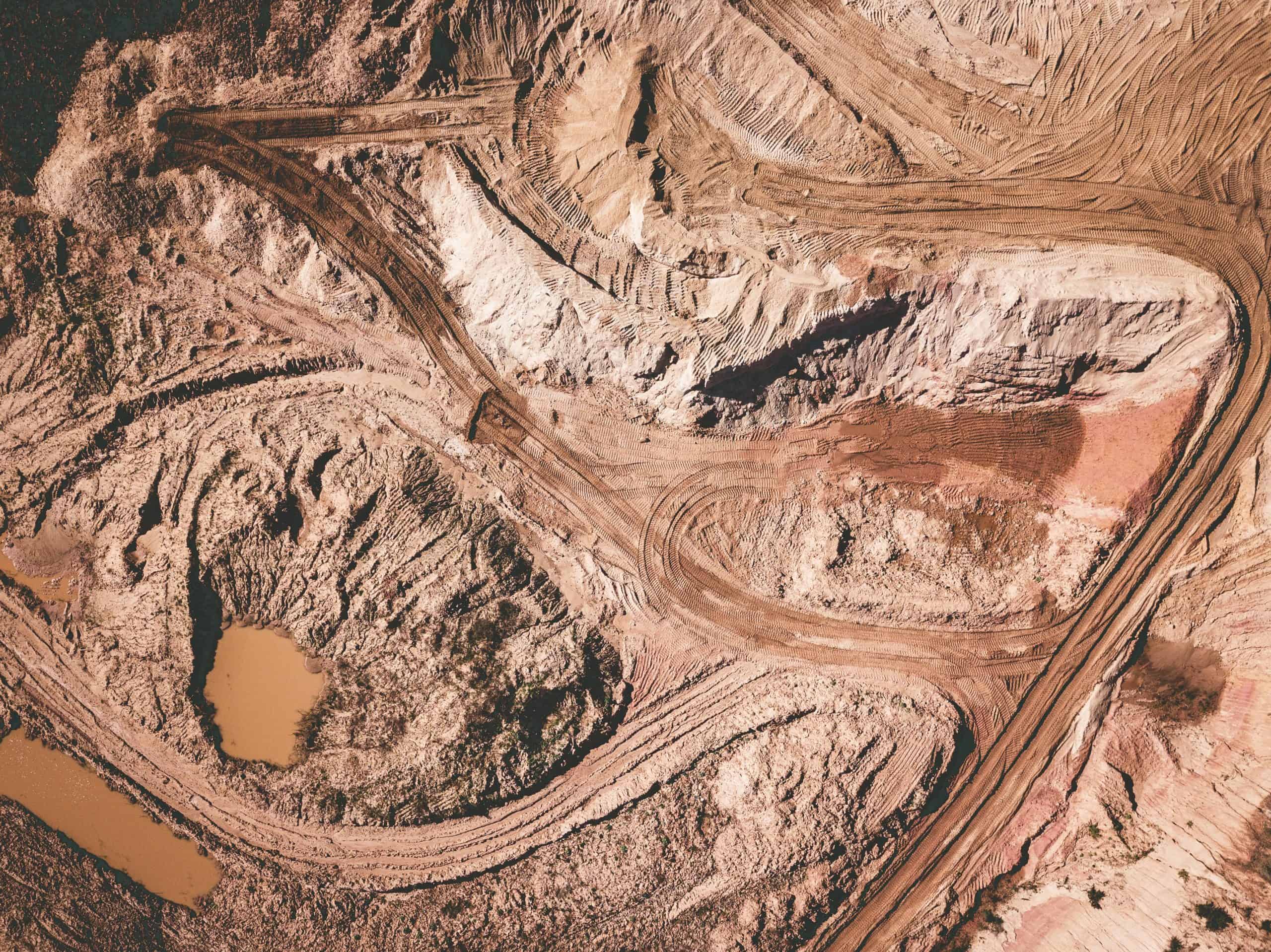The view is, on first glance, nothing short of devastating. Rounding a corner in the road, the trees give way not to some scenic view of the valley but to a strange waste. Instead of the southern Appalachian forest, thick and green in late summer, a carved-up field spreads into the distance. It’s mostly empty. Some patches of knee-high brown grass grow in places, and a few nonnative olive trees evidence a half-hearted reclamation attempt. The shallow soil is crisscrossed with the tread marks of heavy machinery and blows up into clouds of dust in the breeze. The heat, hardly noticeable just a few moments ago, is sweltering.
This is the landscape of a mountaintop removal coal mine. The whole destructive process takes a matter of weeks. After a complete clear-cutting the forest, explosives are placed in deep holes dug all along the side of the mountain. The top of the mountain is then blown completely off so that miners can extract the coal seam below, while the rock, dirt, and natural debris are pushed into the streambed below, burying it completely.. This form of mining employs only a handful people, is far more profitable for the corporations that carry it out, and leaves behind land that is effectively unusable. In its wake, the local community faces risks from flash flooding, groundwater pollution, and economic disenfranchisement.
Where I was born in Southeast Kentucky, mountaintop removal scarred the country around my home. It was my first encounter with ecological sin, though I have seen many more since. As a child, I noticed the litter accumulating on the side of the highway during the long car trips to visit my grandparents. As I got older and the reality of climate change became even more pressing, I began to feel torn about the five-hour car trips themselves. Standing in the sweltering heat of a gas station parking lot, I wondered why nothing seemed to be changing. I came to see that the highways themselves bore the legacy of environmental racism—as a novice in St. Paul, Minnesota I crossed I-94 on my walk to Sunday mass at St. Peter Claver, the highway severing the Rondo neighborhood, a vibrant and predominantly Black community. The more I became aware of the extent of the destruction, the more uneasy I felt, unsure of how God was calling me to respond. As I watched the climate crisis unfold and our ecological situation become more and more precarious, I found myself falling into hopelessness.
I wondered about what I had done—the long solo car trips back and forth from college to visit my parents, the air conditioner rattling away in my bedroom window, the hamburgers I was planning on cooking for dinner. I tried not to think about what I had failed to do—the environmental justice organization whose phone calls I had been avoiding, the climate emergency march I skipped, the hard conversation with a climate-denying family member that I had been putting off. I rinsed out my soup cans and stacked them in the recycling bin and wondered if it was enough.
God met me in my anxious desperation, reminding me that overcoming sin is not about having the right answers but about trusting in God’s mercy. We cannot think our way out of a spiritual crisis. When I pray in the Litany of the Sacred Heart, “Heart of Jesus, desire of the everlasting hills, have mercy on us,” I remember the hills and hollers of my native Appalachia that bear the wounds of human ignorance and greed. I think about the injury that I have inflicted. Kneeling on the loose ground I whisper , “Heart of Jesus, bruised for our offenses, have mercy on us.”
The crown of thorns surrounding the Sacred Heart reminds us that some of the holiest places are also some of the most broken places. As close to Jesus as I feel standing on a sandstone bluff and looking out over the beauty of God’s Red River Gorge, the abandoned strip mine further down the highway is where I meet the Crucified One. In a creek bed buried under a whole mountainside, I feel the grief of the One whose Heart is weighed down with insults . In a scraped-over, lifeless field, I find the One whose Heart was obedient to death. I go up the mountain to pray and, even when the mountaintop isn’t there, somehow God still is.
Where I can see only emptiness and waste, Jesus surprises me with newness—the oak seedlings rooting in the gravel, the cerulean warblers flitting overhead. In spite of everything, death is not the end. The same Sacred Heart that died on the hill of Calvary is also a fountain of life and holiness, the salvation of those who trust in it. As long as Jesus’s Heart is beating, we cannot let ourselves be given over to despair.
Instead, we are invited to the healing work of reparation. In a world marred by sin and division, the Sacred Heart is the place of peace and reconciliation, the delight of all the Saints. God is calling to all of us to overcome our individualism and to confront sinful systems of environmental destruction together. Jesus opens his Sacred Heart to each one of us, and we must open our hearts to one another. When we pray and fast, when we get involved in local community organizing efforts, when we attend demonstrations or participate in civil disobedience, we commit ourselves to the healing of the world and our own hearts.
As I have settled into my new home in the Bronx, a borough carved up by freeways and nicknamed “asthma alley” for its abysmal air quality, I have sought out ways of deepening my commitment to pursuing environmental justice. I attend marches organized by climate justice groups and kneel in prayer while demonstrators are arrested in front of the wealthy and powerful on Wall Street. I meet regularly with an interfaith coalition of people from across New York state lobbying for climate justice legislation in Albany. Sometimes the fear that my efforts are not enough creeps in, but God reminds me that our hope is not in the certainty of our success but in the depths of Jesus’s infinite mercy, in the Sacred Heart, the abyss of all virtue. In the times when I fear that everything might be lost, it is God who continues to labor in creation, fully alive.
-//-
Photo by Ivan Bandura on Unsplash.


